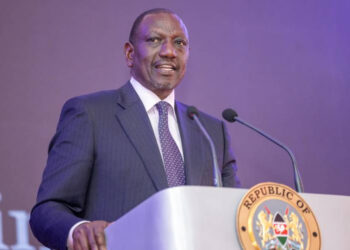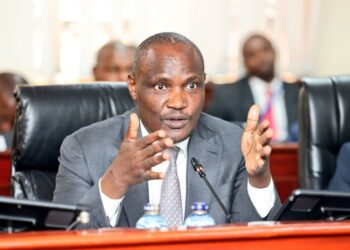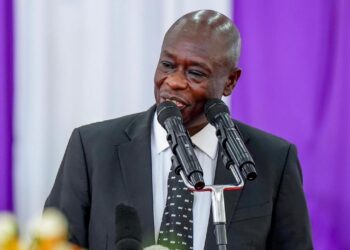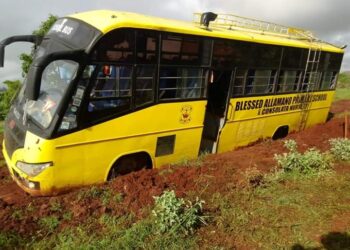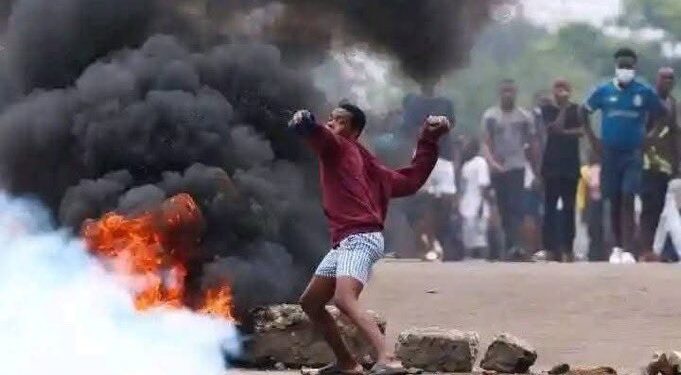The Tanzania blackout protests of 2025 escalate into a nationwide nightmare, plunging the country into total darkness with no electricity, internet, or most radio or TV signals, while security forces haul in thousands amid reports of at least over 700 lives lost in three days of fury over rigged election results.
From the sweltering streets of Dar es Salaam to the misty highlands of Arusha, the air hangs heavy with the scent of tear gas and burning tyres.
The internet remains shut and the media censored in Tanzania. The government is actively suppressing coverage despite 3 days of protests against a disputed election and the leadership of President Samia Suluhu Hassan. The opposition CHADEMA claims 700 people have been killed.
“Our correspondents, whispering updates via smuggled satellite phones from safe houses, paint a grim canvas: power grids offline since dusk, enforcing an ironclad curfew that turns bustling avenues into ghost towns patrolled by flashlight beams and armoured trucks.”
“It’s like the whole nation blinked out,” murmured Amina Juma, a 28-year-old teacher hunkered in a Temeke basement with her two kids, her words relayed through a crackling line before another sweep.
Radio stations, lifelines for the disconnected, fell silent hours ago, their towers yanked by state decree, leaving families to huddle around battery lanterns and share rumours like contraband.
The death toll, a staggering over 700 by Human Rights Watch tallies and from Chadema party spokespeople, eclipses even the darkest days of 2020’s Magufuli crackdowns.
Clashes erupted post the October 29 polls, where President Samia Suluhu Hassan’s CCM machine claimed 97 per cent of votes amid whispers of ballot stuffing and jailed rivals like Tundu Lissu.
Protesters, mostly youth waving faded Chadema banners, torched party offices and clashed with riot squads, their Molotovs met by live rounds from troops accused of including Ugandan mercenaries in civilian garb.
In Mwanza’s lakeside chaos, five fell to sniper fire alone, bodies draped in white shrouds by dawn prayer calls. Arusha’s safari trails, now barricaded with boda boda husks, saw 200 dragged to holding pens, per underground counts.
“They came at midnight, no faces, just clubs and cuffs,” recounted Elias Ndugu, a 35-year-old mechanic who slipped a dawn patrol, his knuckles raw from the scrum.
Arrests surge into the thousands, with makeshift jails in Dodoma overflowing and reports of beatings in transit vans. Human Rights Watch, piecing fragments from border leaks, decries a “systematic purge”, urging UN intervention as Guterres voices “deep concern” from New York.
The internet, severed since October 30, starves the world of visuals, but bootleg clips smuggled via Kenyan SIMs show elders shielding youth and women linking arms in kitenges against baton charges.
Electricity flickers mockingly in elite enclaves, fuelling cries of two-tier terror. “Samia’s light stays on while ours dies,” spat one viral whisper from a Dar fishmonger, her stall shuttered since the blackout.
Chadema vows “no surrender”, their exiled leaders piping defiance from London via ham radios. Neighbouring Kenya seals Namanga tighter; Isebania traders count losses as protests spill, and bonfires light cross-border pleas.
Economic scars deepen: ports are idle, coffee farms are untended, and tourism ghosts haunt Zanzibar’s spices. Yet, in the void, resilience flickers.
Families share moonlit tales of Nyerere’s freedoms, youth etching manifestos on napkins. The Tanzania blackout protests of 2025 aren’t mere unrest; they’re a reckoning for a six-decade grip slipping in bloodied hands.

